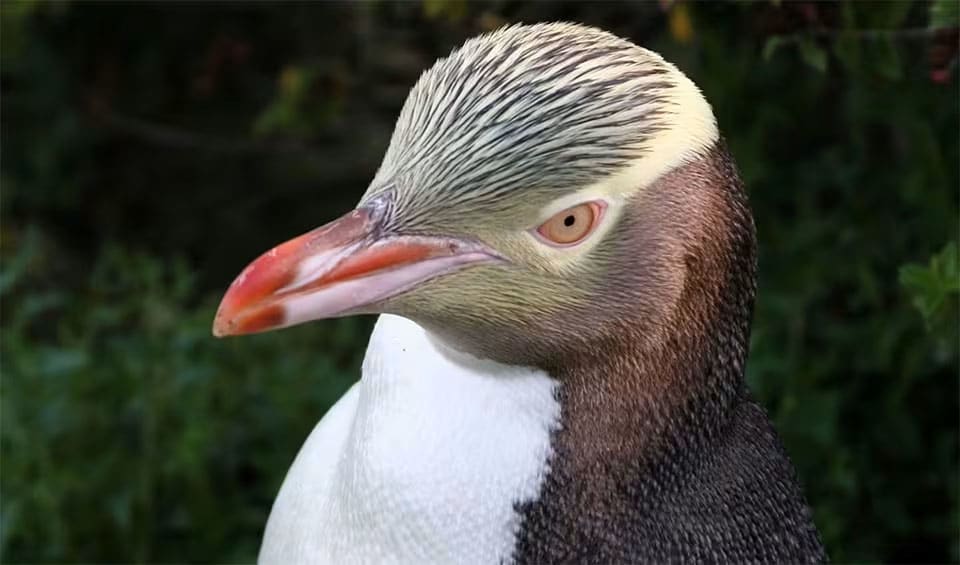Megadyptes – Yellow-eyed penguin
The vanishing yellow-eyed penguin
The Yellow-eyed Penguin, known to the Māori as Hoiho, casts a singular silhouette along the coasts of New Zealand, earning its place as one of the most distinct and ancient penguin species alive today. These birds stand apart in the penguin family tree not only for their rarity but also for the striking yellow eyes and the band of yellow that crowns their heads and encircles their eyes. This contrasts sharply against their black-feathered bodies and yellowish faces speckled with black.
A yellow-eyed penguin’s plumage is an array of contrasting hues – with a white front that appears almost luminous against the dark backdrop of the ocean and fawn-brown flanks that blend seamlessly into the landscape of the beaches and scrublands they call home. These penguins are as unique genetically as they are visually; there are significant genetic differences between the populations found on the subantarctic islands of New Zealand and those on the South Island, reflecting their adaptation to different environments over millennia.
These penguins do not huddle in large colonies like many of their kin. Instead, they are a non-colonial species, preferring solitude. Their nesting sites are often hidden in coastal forests, amongst the regenerating scrub, or even plantations. They have been known to waddle up to a kilometer inland to find the perfect spot to ensure their chicks’ safety and seclusion.
In their marine environment, yellow-eyed penguins are exclusive benthic foragers. This means they dive to the ocean floor to hunt, navigating the underwater forests of kelp to find fish and cephalopods. This feeding style dictates their need for clear, unpolluted waters where their prey can thrive and where they can deploy their excellent underwater vision to the greatest effect.
The future of the Hoiho is fraught with challenges. Their current population is estimated at a perilous 3,400 individuals, with projections indicating a haunting decline that could lead to their local extinction within the next two to four decades if current trends persist.
Species in this genus
Yellow-eyed penguin
This vanishing New-Zealander is the most endangered penguin species

